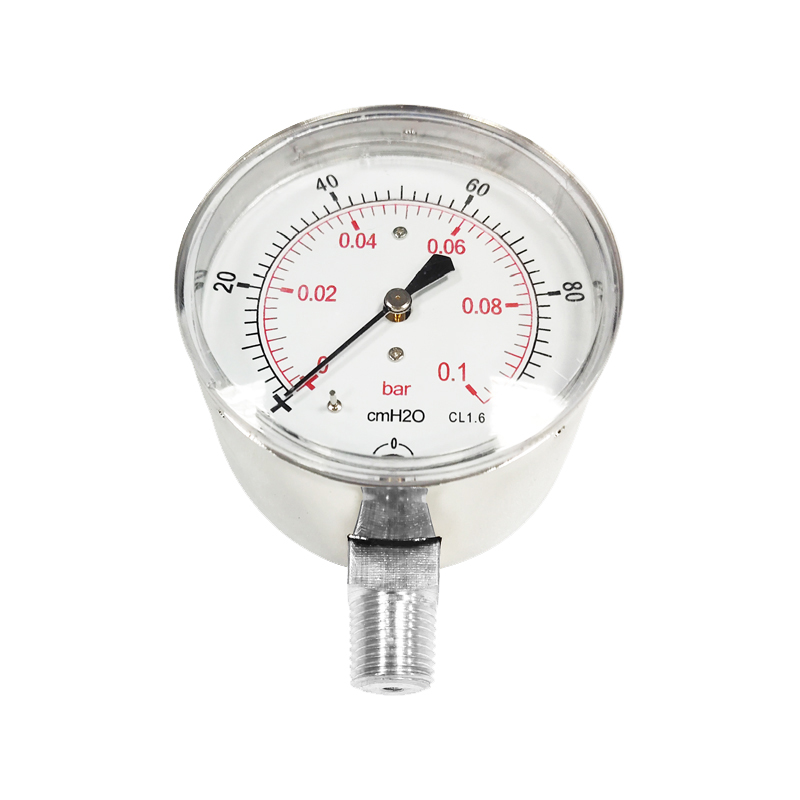
8월 . 05, 2024 19:10 Back to list
Pressure Measurement Solutions for Fire Protection Systems in Air and Water Applications
Understanding the Importance of Air/Water Pressure Gauges in Fire Protection Systems
In modern fire protection systems, ensuring optimal functionality and performance is crucial for safety in both residential and commercial spaces. One often-overlooked component that plays a significant role in these systems is the air/water pressure gauge. This device is vital for monitoring the pressure levels within fire suppression systems, including sprinkler systems, ensuring they operate effectively when needed.
The Role of Air/Water Pressure Gauges
Air/water pressure gauges serve as indicators for the pressure levels of either air or water within fire protection systems. In many fire suppression systems, particularly those involving sprinklers, water is stored under pressure. When a fire occurs, the system must activate promptly to deliver water to the affected area. The pressure gauge ensures that the system holds the necessary pressure to function correctly.
These gauges not only provide real-time readings but also alert maintenance personnel when pressure levels fall below safe limits. If the pressure is too low, the system may not activate as designed, leading to potential catastrophic consequences during a fire incident. Conversely, if the pressure is too high, it could lead to stress on the system components, potentially resulting in leaks or bursts that could compromise the system's integrity.
Importance of Regular Maintenance
Regular maintenance of air/water pressure gauges is essential. Fire protection systems are typically checked during routine inspections, where technicians verify that all components, including the pressure gauges, are in good working condition. Regular calibration of gauges is also critical for ensuring accuracy. An inaccurate gauge can provide misleading information, potentially resulting in delayed responses during emergencies.
air/water pressure gauge for fire protection service jah

In many jurisdictions, there are legal requirements for regular inspection and maintenance of fire protection systems. Compliance with these regulations is essential not only for safety but also for legal liability. Facilities that neglect the maintenance of these systems may face not only risks to safety but also legal repercussions in the event of a fire.
Integrating Technology for Better Monitoring
As technology continues to evolve, many fire protection systems are now integrated with advanced monitoring technologies. Smart gauges and IoT (Internet of Things) devices can connect with centralized monitoring systems, providing real-time updates and alerts to facility managers. This integration allows for immediate action if issues are detected, enabling proactive maintenance and reducing the risk of failures during a fire event.
These smart systems can also provide historical data analysis, allowing for better understanding and forecasting of maintenance needs. By leveraging data analytics, facility managers can optimize maintenance schedules and potentially extend the lifespan of fire protection systems.
Conclusion
In conclusion, air/water pressure gauges are a critical component in fire protection systems, essential for ensuring operational readiness when seconds matter during a fire emergency. Regular maintenance and monitoring of these gauges cannot be understated; they are integral to the overall safety strategy of any facility. As technology continues to advance, the integration of smart monitoring systems offers promising enhancements to traditional fire protection methods, ensuring greater safety and reliability. Investing in and prioritizing these elements of fire protection can make a significant difference in safeguarding lives and property against the threat of fire.
-
High-Precision 5 Valve Manifold Differential Pressure Gauge Suppliers
NewsApr.29,2025
-
High-Precision Diaphragm Vacuum Pressure Gauges Manufacturers & Quotes
NewsApr.29,2025
-
Omega Differential Pressure Gauges High Accuracy & Durability
NewsApr.28,2025
-
Low Pressure Differential Pressure Gauges Precision Solutions & Quotes
NewsApr.28,2025
-
Digital Diaphragm Pressure Gaauge Precision Measurement & OEM Quotes
NewsApr.28,2025
-
Differential Pressure Gauge China Price High-Accuracy & Best Quotes
NewsApr.28,2025
